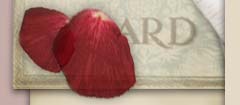Daily Gleaner
Thursday February 14th, 2008 page a5
Local war brides eligible for U.K. honour
By Michael Staples staples.michael@dailygleaner.com
A pair of Fredericton women are excited about the British government's plan to recognize contributions made during the First and Second World wars.
War brides Doreen Lawrence and Chris Harris are eligible for a special badge of recognition from the United Kingdom.
The badge is designed to acknowledge surviving members of the Women's Land Army and Women's Timber Corps. It was comprised of people who worked on the home front during the two wars to provide food and timber for Great Britain.
Lawrence and Harris served with the Women's Land Army during the Second World War and later immigrated to Canada after marrying Canadian soldiers.
Harris, a native of Glasgow, Scotland, milked cows, worked in the fields and, among other things, picked potatoes for a year on a farm.
"I had never experienced it before because I was from a great big city," said Harris, who followed her Canadian sweetheart, Gilbert Harris, to Canada.
"When I went to the land army, I didn't know which end of the cow to milk. It was a lot of work but I enjoyed it."
One of the better things to come out of the experience, she said, was the food.
Harris had been working in a munitions factory and wasn't used to eating so well.
While happy she and others are finally being recognized, Harris wonders why it's taken more than six decades for such an acknowledgement to be made.
Lawrence said she is just waiting for her application papers to arrive.
"I loved the land army, but it was very, very hard work and heavy to do," said Lawrence, who worked on a farm in Sussex Country in the southern part of England.
"I was in the land army for about a year."
Lawrence, who married Canadian soldier G. Byron Lawrence when she was 17, spent her time in the field.
She recalled helping an older man working on the farm lift a 90-kilogram (200-pound) bag of grain on to a wagon.
She said she still feels the effects on her back today.
Lawrence, who received a letter years ago from the Queen Mother thanking her for her contribution during the war, said she is excited about the chance of receiving a badge.
Fredericton author Melynda Jarratt, who has written extensively on matters relating to War Brides, said the Women's Land Army and Timber Corps is something a lot of people are unfamiliar with.
"The land army is virtually unknown to people outside the group of people whose relatives served," Jarratt said.
"The women's land army was Britain's solution to a crisis sparked by the conscription of men to serve in the Armed Forces. There was a shortage of bodies to physically do the work required on the farms. An army marches on its stomach."
Bodies were required to till the land, to raise and feed cattle, and to grow produce and poultry, she said.
"They didn't know a cow from a chicken, but they certainly learned how to work on a farm and many of them met the love of their lives in these farming situations," she said.
Jarratt estimates that as many as 2,000 such women are in Canada and eligible for the award -- with at least 100 in New Brunswick.
"It's going to be a badge they can wear to commemorate their participation in World War II and their work in the agricultural sector," Jarratt said. "It acknowledges a huge debt that the country owes them. Without a solid, productive agricultural economy, the war could not have been won."
The application form and related eligibility criteria are available at www.defra.gov.uk/farm/working/wla/.
Requests for application forms can be made by post or telephone to: Mr. Dermot McInerney, Defra, 5E Millbank, c/o 17 Smith Square, London, England, SW1P 3JR.



